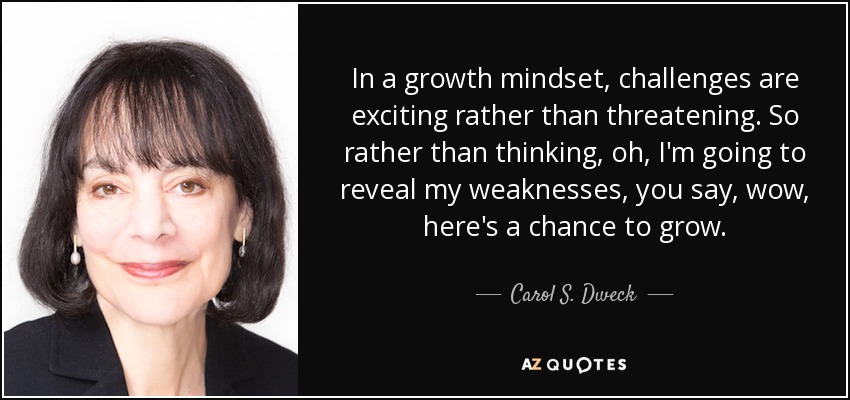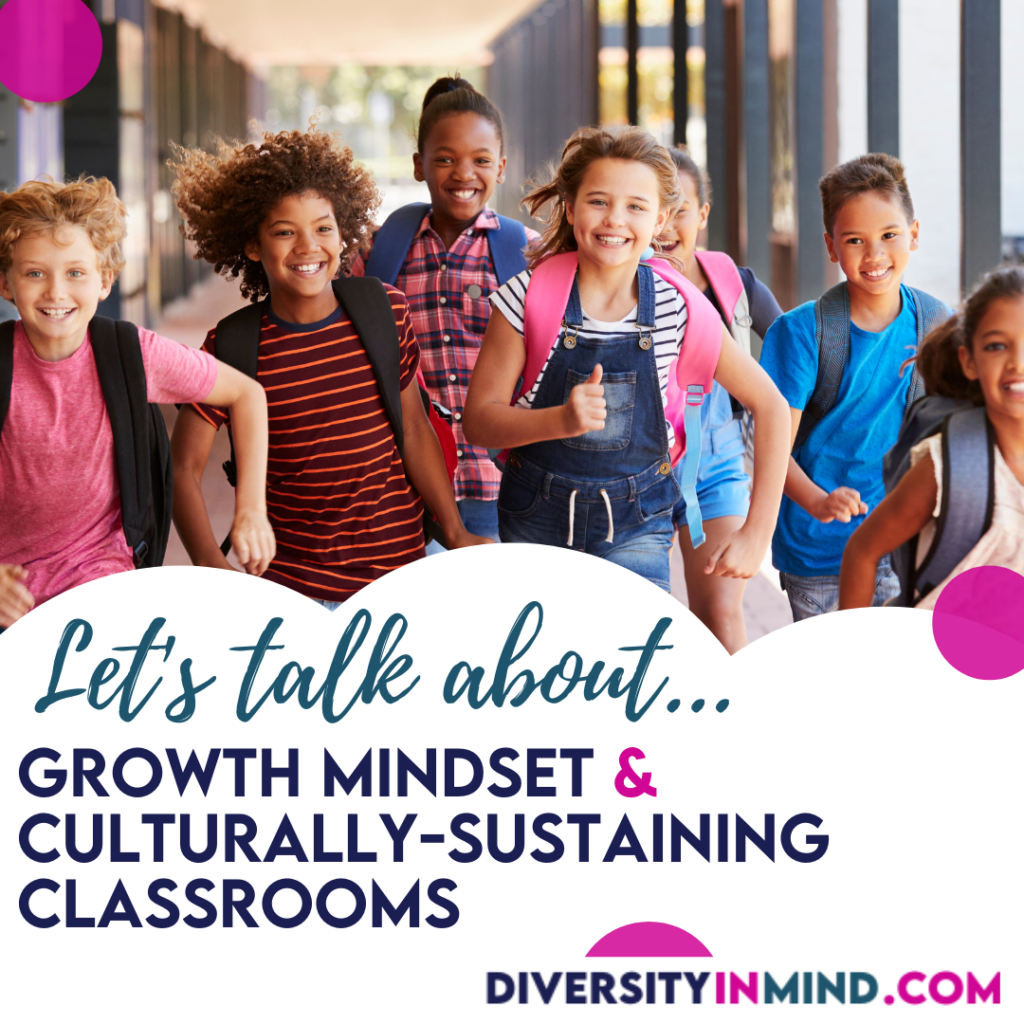‘Mindset’ is a word that most educators will have at least heard of by now. It comes from Carol Dweck’s book of the same name, and her famous TED Talk (with a transcript and subtitles in 43 languages) is embedded below. In a nutshell, it refers to the idea that people have 1 of 2 mindsets:
- A fixed mindset whereby individuals believe ability is determined by genetics (or other factors beyond our influence) and is not subject to our choices.
- A growth mindset where people believe the choices they make can grow or limit their capabilities.
In this post, we’ll explore how mindset relates to culturally-responsive-sustaining classrooms, and our next post will explore how we can harness the concept for more student success.
First - Some Mythbusters
Mindset has, like many popular ideas, developed its own mythology as it’s been passed on from PD session to conference to YouTube video. So, here are some myths to dispel before we continue:
Myth #1 – Anyone can do anything they set their mind to.
The reality: We all have very real limits that differ from person to person; the only claim Dweck makes is that when we understand our abilities can be developed, we tend to see higher achievement.
Myth #2 – If I teach students about a positive mindset, they will develop one.
The reality: Some students will resist the idea that their choices impact their achievement; this may be for many reasons including a lack of confidence, not enough exposure to the theory, a lack of faith in what the teacher says, a feeling of being manipulated, immaturity, or something else. Nonetheless, research suggests that students who learn about a growth mindset are more likely to develop one.
Myth #3 – Students who have a growth mindset will always have a growth mindset
The reality: Students can have a growth mindset in some contexts, and a fixed mindset in others. Sometimes academic struggle can create a feedback loop that encourages a fixed mindset. However, explicitly teaching students mindset lessons tends to lead to better outcomes.
Myth #4 – Grabbing a lesson plan on growth mindset means students will learn all they need to know
The reality: Understanding a growth mindset takes some effort and reading. Dweck herself has spoken about ‘false growth mindset.’ A good start in understanding what it is (and it it is not) would be to watch her TED Talk (above) or read her book. It takes constant reinforcement through classroom culture and practices to nurture the development of a growth mindset in your learners.
Growth Mindset & Positive Learning Environment
It’s not hard to tell from the definitions above that educators hope their students develop growth mindsets. It make our job of teaching much easier when students see our lessons can positively impact them. Learners are more likely to be cooperative and engaged when they see the point of learning. Having a growth mindset also grows their confidence and overall life satisfaction because they feel empowered to make choices that influence positive outcomes for themselves – don’t we all feel that way?
In a culturally-responsive-sustaining classroom, we intentionally aim for learners to feel safe, welcome, and purposeful in their learning. Having a growth mindset makes the likelihood of a positive learning environment that more likely.

Growth Mindset & Identity
I would argue that a growth mindset encourages students to advocate more for themselves and others. Learners who have traditionally been marginalised, especially through the curriculum, may feel there is no room for them to celebrate or share aspects of their own identities safely. However, with a growth mindset, students may start to take more risks in terms of bringing their identities into the classroom. A fixed-mindset student who feels there background is worthless in the classroom (as I did) might think, ‘Nobody is interested in my background, so there’s no point in talking about it.’. In contrast, a student with an intentionally-nurtured growth mindset might think, ‘I can’t see mirrors in my learning, but I can try to include the invisible aspects of who I am and see how people react – they might react with interest and encouragement. In any case, it helps me be me.’
While these examples might look like self-confidence over mindset, the 2 are inextricably intertwined.

Growth Mindset & Achievement
One of the tenets of a culturally-responsive-sustaining classroom is that the teacher (and students) believe that everyone can achieve academic success.
Many people from minorities experience doubt in their academic potential as a direct result of their ‘minorityness’. Stereotype threat (video below) may exacerbate this and lead students to underperform in situations where ‘people like them’ are expected to be found lacking. (This is admittedly an oversimplified summary of a more complex theory, so I do recommend watching the video to hear from the researcher, Dr Steele.)
Thankfully, there is research to suggest that understanding both stereotype threat and mindset can have significant impact on outcomes for students. While the authors of this paper warn against implementing interventions without properly understanding what’s involved, their initial findings involving these concepts is very encouraging.
“Think of it like the body’s immune system: if we can strengthen students’ internal resources—by helping change the attributions they make when they experience set-backs, helping them see that intelligence is malleable, reminding them of their values, goals, and strengths, and showing them that others struggle with imposter syndrome too—we bolster their ability to fight stigma and persevere in the face of challenges. We begin to level a playing field that is far from level, and we give our students powerful tools to grow academically and personally.” (Norman and Bridges, 2018)
Take Some Time
Once we’ve taken some time to understand the concept of mindset and how it relates to culturally-responive-sustaining classrooms, we are ready to introduce it to our students.
In the next post, I’ll share how I embed the concept in all learning experiences.
In the meantime, enjoy the learning and reflection as you explore the many links provided above. As always, let me know what you’re thinking through our Facebook group or in the comments below. I welcome the conversation for my own learning too.
We’ve got this!

Sources:

